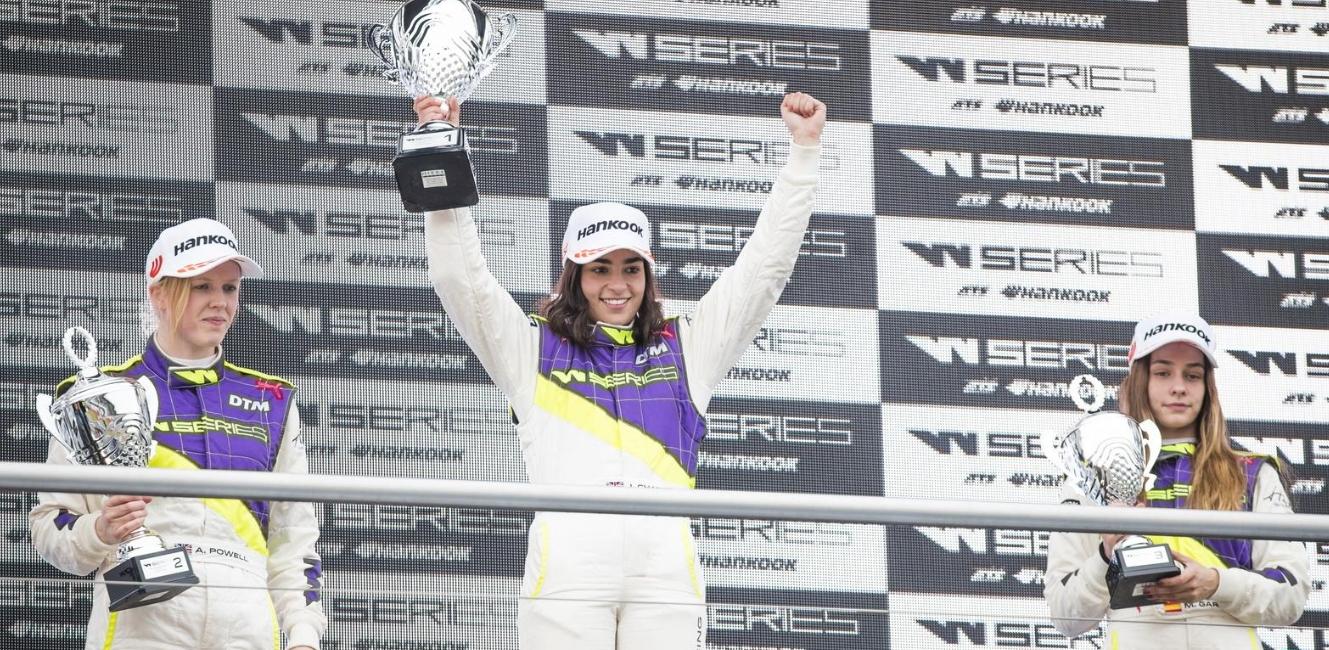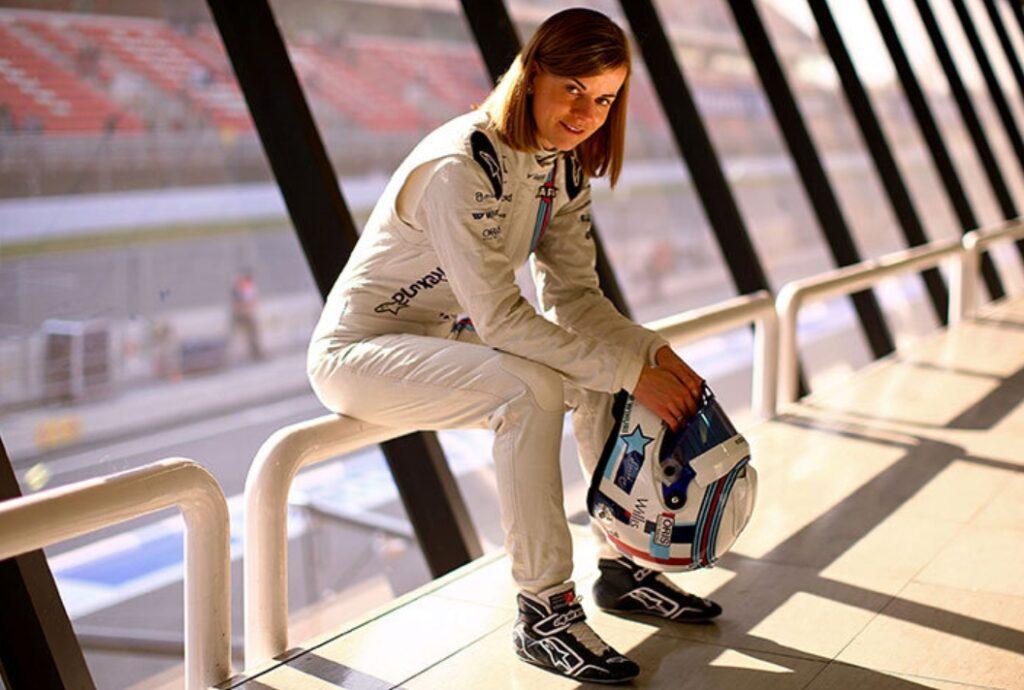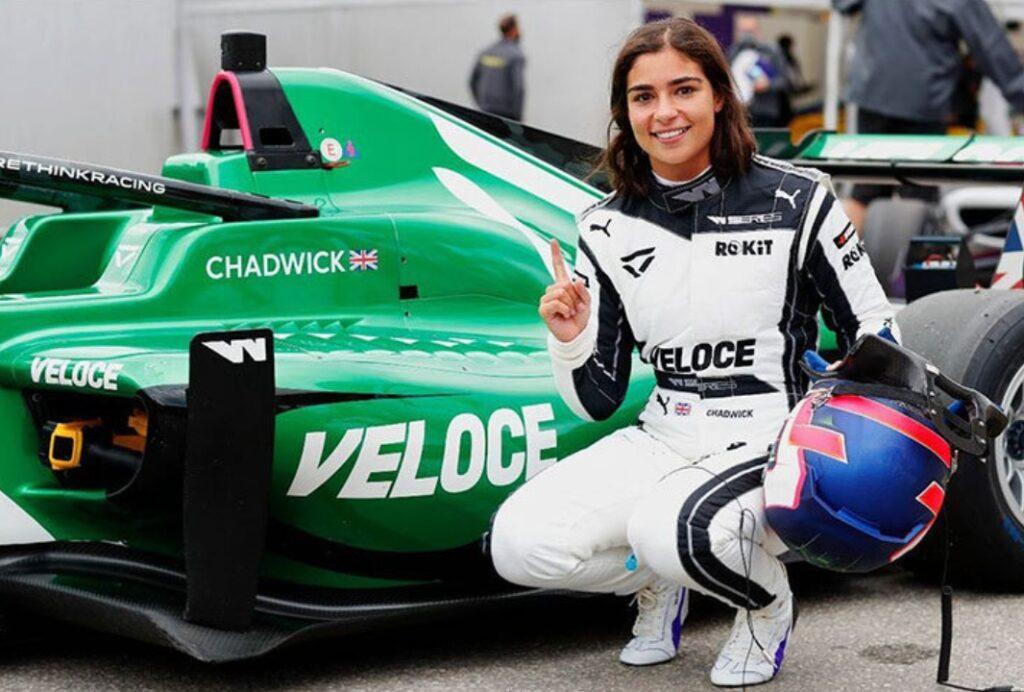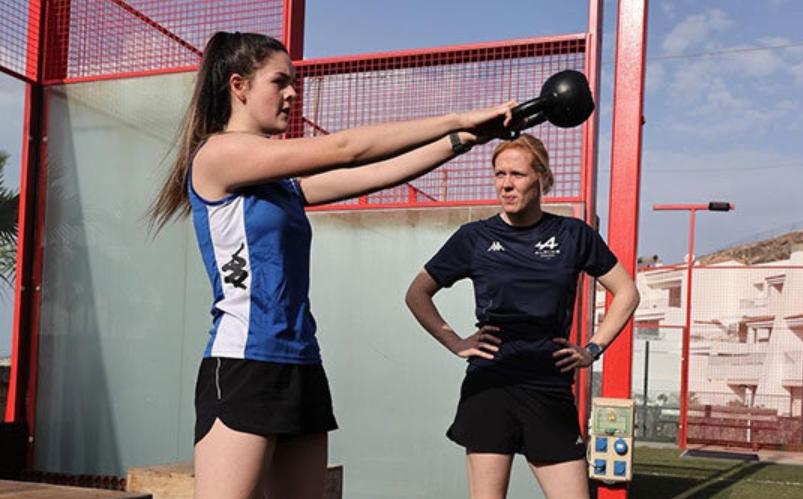The girls finally admitted: “F-1” cannot physically pull on a par with the guys. Need more youth racing, power steering and special cars

Over the past 5 years, a lot has been done to promote girls in motorsport: the FIA Girls on Track programs, Ferrari special tests and competitions, the Alpin Rac (H) er system, the fund of former F-1 driver David Coulthard and even a whole female Serie W championship (now – support races in F-1). All with one goal: to find a female version of Lewis Hamilton, bring her to the Grand Prix and prove that girls are able to drive at the highest level on a par with men.
After all, this is what they have been assured for years – especially on the example of the former Williams test driver Susie Wolff, who skated four sessions in 2014 and 2015 as part of practices at the British, German and Spanish Grand Prix – and lost in the second session (the first ended with an oil leak after the 4th lap) just 0.2 seconds Felipe Masse.
“I am 100% sure that women can perform at this level,” she said then. – Therefore, it is always important for me to show what I am capable of.

I do not think that there is a female and male view of the piloting of the car – only the view of the racer. You have to adapt very quickly, everything happens in a split second. I’m not going to play the sex card and say, “let me drive because I’m a girl.” I’m fast enough.”
But in the last couple of years, there seems to have been an awareness of the complexity of the situation. For example, the best racer in the world right now, Jamie Chadwick, won the W Series twice, earned under a million dollars in prize money, but so far has not been promoted even to the regular F-3 and will return to the championship for girls.
“I set myself the goal of getting into Formula 1, but I don’t know if this is possible,” she admitted in a recent interview with The Guardian. – After all, to get into the “F-1” you need to go through the ladder of junior series – “Formula 3” and “Formula 2”. And the physical activity is very high.
We like to think that a woman is capable of getting into Formula 1, and I would be happy to take on the role of a guinea pig and try to do it. But we don’t really know if it’s possible or not. In the modern era, we have not seen women in Formula 1. And I’m trying to figure out if it’s related to the exercise factor.
And in Formula 1, the loads are extreme, and we don’t know what exactly a woman will be capable of. If a girl is 15-16 years old and you get behind the wheel of a racing car – without power steering, with a large mass … Let’s just say that it will be difficult for many women, even if you have successfully competed in karting before.”
There are a lot of real nuances, right down to the shape of the rudders and the shape of the cockpit. For women, special requests are needed, and for teams, such requests are additional production costs.
“I don’t think it’s as direct as ‘get pumped up in the gym and jump in the car’.” The sport is too incredibly advanced in a lot of things, and the physical perfection side is misunderstood.

In Formula 2 and Formula 3, all the handlebars are identical to each other, with a very thick grip,” Chadwick said. – Is it possible to make the hands thinner, because women usually have not such big hands? Is it possible to think about the optimal arrangement of the pedals?
Another point – many seats in the cockpits have become very narrow. In women, the hips are usually wider than in men, and it can be difficult to fit into such a seat. So many of these things were usually just ignored – for obvious reasons, but now we see that these factors can also affect speed.
Gradually, the idea “there is still a physical difference” goes into the mainstream – now it was expressed in an interview with The Race by a new student of the Alpin Academy, 19-year-old Abby Pulling and her mentor, 29-year-old Alice Powell (both perform in Series W, Abby has three podium in two years and second overall behind Alice’s four Grands Prix – 4 wins in 3 years and second overall in 2021).
“I think a girl should have a longer career in the youth series than a guy, simply because they need to develop a little longer physically, it’s just human anatomy,” Abby admitted in an interview with The Race. – We gain and build muscle mass longer, therefore it is difficult for us to “make Lando Norris” and immediately join the “formulas” at an early age.
Theo Purscher was put into a Formula 2 car at the age of 16. No idea if this will ever happen to a girl.”
Therefore, Pulling is sure that due to a different physical peak – closer to the second half of the 20th anniversary – it is better for her to spend 2023 in Serie W anyway, and aim for the transition to F-3 already in 2024.

Alice Powell had already raced there 10 years ago (then the series was still called GP3 – and she once finished 8th and finished the championship in 16th place in the overall standings out of 31 participants. The following year, by the way, she was won by Daniil Kvyat), when she was 19 – and, in her opinion, physical activity in the youth team is even higher than in F-1. At least on the hands.
“Yeah, women can’t build muscle as fast as guys, it’s just science, it’s just facts. Powell confirmed to The Race. – We are not so physically strong, again, this is a fact. Because of it, we need more time to build the body and adapt to the sport.
Formula 1 doesn’t put as much stress on the arms as F2: when you talk to guys who have raced both, they say that the top series places more stress on the neck, torso and legs.
It would be great to introduce power steering into Formula 2. This would help the pilots to reach the level needed for F-1. And that would help the girls perform better and showcase their talent better in series like F2, where the physical side is stronger.”
“If you draw up a complete development plan, specially tailored for a girl, I think it will be possible to achieve success in the youth series, but power steering should definitely not be ignored. It’s worth discussing,” Pulling says.
“There is a lot of talent in the youth that follows me, they can succeed,” admits Chadwick, 24. – But there are details in our sport that limit them. Trying to understand and change them – even if not for me, but for the next generation – is very important.”
“There is a lot of talent in the youth that follows me, they can succeed,” admits Chadwick, 24. – But there are details in our sport that limit them. Trying to understand and change them – even if not for me, but for the next generation – is very important.”
And their arguments really seem to be fair: Susie Wolff, for example, moved to the main German touring car series DTM at the age of 24, earned her first points at 28, qualified for F-1 at 31, and I’m getting off with Massa speed showed at 32.
Power steering is also a long-standing theme in Formula 1: it has been present for many years, and every time a new regulation is discussed, it is proposed to be removed to complicate piloting. However, it persists every time – just because of the desire to make F-1 a competition in the art of squeezing the best lap time, the most accurate direction of cars to the apexes of the battle of trajectories, and not physical survival in a fight with technology. For the second, there is an Indycar – it does not have power steering, and all pilots moving to American racing instantly recognize that races without it are really a slightly different sport.
This seems to be the real existential question of the entire Formula 1 vertical: is she and her youth series ready for simplification for the sake of a chance for girls, or should open-wheel car racing for women still be cut into separate series and championships?








